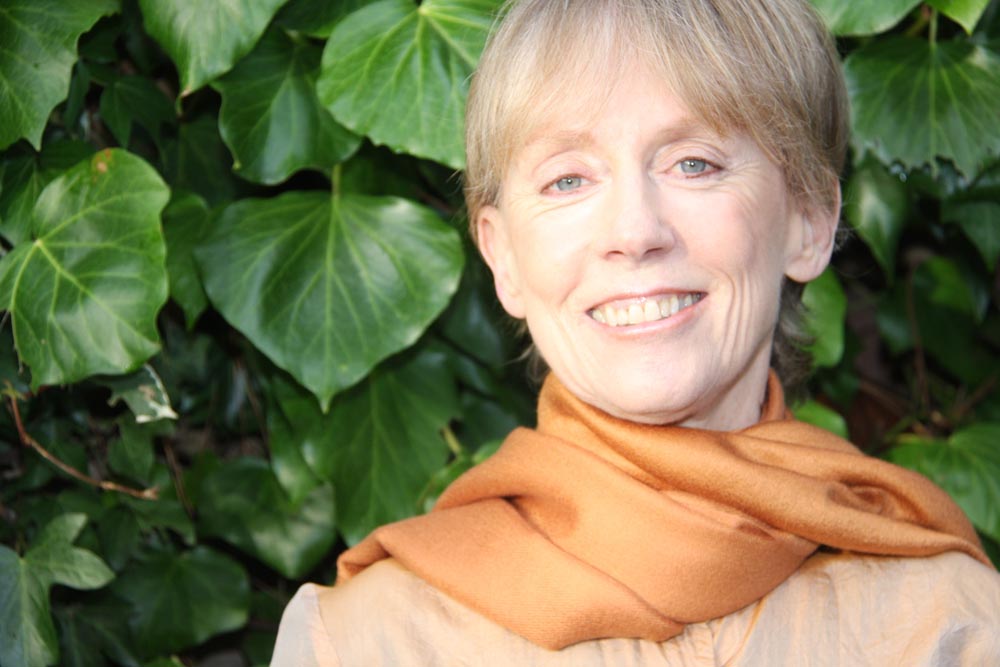
It's easy to like Sally Kempton, a meditation inspiration to "Eat Pray Love" author Elizabeth Gilbert. Not because Kempton listens carefully or laughs easily, though I'm partial to anyone who can do either in this crazy-busy world. Certainly, her likability has nothing to do with the fact that Gilbert counts herself as one of Kempton's followers. If anything, claims to fame only raise expectations, making the subject of such claims harder, not easier to like.
No, what makes the beloved meditation teacher so likable is the same thing that makes Gilbert a best-selling author -- her special ability to translate subtle life truths into simple, practical and compassion-enhancing lessons.
To be clear, Gilbert has learned from Kempton as I have -- from a distance. We've both been inspired by Kempton's written meditations on meditation, but Gilbert has taken that inspiration further. The truth is a little confusing, but to be precise: The ashram Gilbert described in "Eat Pray Love" was founded by Kempton's original meditation inspiration, Swami Muktananda.
Me, I've yet to give Kempton's new book, "Meditation for the Love of It," sufficient time. I'm intrigued by what the dust jacket promises: "Practical secrets to help us turn meditation into an unconditional embrace of the fullness of our experience -- on and off the meditation cushion." No surprise, that promise was not fulfilled on first reading. With more time, I'm hoping fulfillment will come.

If you're reluctant to take my word for Kempton's likability, consider taking Gilbert's: "She [Kempton] is not only one of the best meditation teachers in the world; she is also one of us," Gilbert writes. "She manages to fearlessly explore the outer reaches of the universe without ever losing the warm voice of your dear friend from just around the block."
Speaking of books, Kempton and I share the same publisher. Because of that, we got to talking about our shared interests: eating, meditating and loving. Before I share select questions and answers from our recent phone conversation, I must say that while we resonate with that old Beatles' song, "All You Need Is Love," and we appreciate a heart-opening meditation and a mouth-watering dessert, we don't see eye to eye on everything. Rather than simply agreeing to disagree, you'll see that our unspoken agreement is to the open, honest and playful exchange of ideas.
Q. What drew you to meditation?
A. In my late 20s, I realized I didn't really know who I was. I was following the path of success in NY, and doing pretty well -- writing for magazines, dating, known in my circle for being cool -- but there was a pervasive feeling of not being satisfied by any of it. It was literally as though my heart wasn't in it. Even though I was doing everything I was 'supposed' to do in life, I found myself asking: "Is this all there is?"
Q. OK, so you were dissatisfied. But you were following in the footsteps of your dad [the late Newsday columnist Murray Kempton.] Why did you trade journalism for meditation?
A. I didn't exactly trade journalism for meditation. Once a writer always a writer! My writing simply morphed as my priorities morphed... What changed my trajectory was a spontaneous and very radical awakening of my heart, which arrived out of nowhere and shifted my priorities in an instant. The problem was, I couldn't hold onto the open-heart space because my mind was so unruly. So I started looking for ways to tame my mind, and meditation seemed to be it.
Q. Your story sounds a lot like Elizabeth Gilbert's. You both went through, how do you put it, a "moderate life crisis"?
A. Yes, she and I have a lot in common. We're both social observers -- we're both interested in the way society works, love works, relationships work. We're both radically independent. We were both operating in a male-dominated publishing world - she wrote for GQ; I wrote for Esquire. And we were both drawn to the same kind of [heart-based] spirituality.
Q. Elizabeth Gilbert says your writings have been "life-saving." Do you know what she means by that?
A. People often tell me that the book inspires them to want to meditate. This is probably what she meant. In the book, I suggest a path of playfulness and experimentation that helps people get past barriers and deeper into the exquisite spaciousness of their inner world. There's this enormous treasure house inside of us. Most of us get to the door, catch a glimpse, but can't go further. There was a time in my practice when I reached this same limit in how deep I could go. By experimenting with different ways of meditating, I learned how to go much deeper. What I share in the book is the approach that let me do that along with a lot of practices, some classical, some fairly original.
Q. You prescribe a variety of love-enhancing meditations in your book. What's love got to do with it?
A. Love is what makes meditation juicy, enjoyable, deep. When love is lacking, I've learned in my many years of teaching, meditation can start to feel dry, dutiful, unconnected to our emotional life, and then eventually we don't want to do it anymore. But if you kindle love in your meditation, it not only makes your practice juicy, it begins to spill out into your actions and interactions with other people. It starts to change the way you are in the world.
Q. Do you have a favorite love-kindling meditation?
A. My favorite is to let the breath draw your attention to the upper chest, behind the breast bone, right to the physical heart. On the inhalation, feel the breath caressing your heart. On the exhalation, feel the breath softening or expanding the heart. As you do this, a tender, loving energy arises.
Q. Living with an open, loving heart in this sometimes cold, cruel world sounds scary and difficult, if not impossible. But you clearly recommend it. Why?
A. When your heart is open, you have infinitely more power. Many students tell me when they make this practice a part of their life, they're better able to navigate difficult situations. The can speak from the heart; their words have more impact. It helps them deal with an unruly teenager, an out-of-control manager, a lot of situations in which they'd ordinarily be reactive.
Q. You encourage readers to meditate a daunting one-and-a-half to three hours a day? Seriously?
A. That's only for people interested in a radical experience of depth in meditation. For everyone else, I recommend starting with 20 minutes day. If it's hard to sit still, start with five minutes, and add a minute a day.
Q. What's your daily meditation practice like?
A. I sit for one hour in the morning, and 20 minutes to an hour in the late afternoon. I do a lot of stopping in the middle of the workday, closing my eyes for a minute, or doing a breathing practice for two minutes. I practice a lot with affirmative thoughts, like "Grace is everywhere" or "Is there a different way of looking at this situation?" I'm a strong believer in working with transformative thoughts throughout the day.
Q. How about eating for the love of it? What do you recommend?
A. I believe in eating as a celebration. I love to eat. I love sweets, but sugar's not that good for you. What I've learned to do is eat sweets as a "blessed food," satisfy desires and cravings by savoring small portions.
Q. I don't agree with your recommendation to chew every bite 50 times. If you're eating chocolate cake, is that what you do?
A. No, I've never tried that with dessert.
Q. Chewing anything 50 times doesn't sound mindful or loving. Why 50 chews?
A. I'm not attached to that number. What I'm attached to is chewing food as a general principle. It helps with digestion. When you're creating a discipline, concrete steps help, like counting breaths or counting chews. After a while, you don't have to count because you've established a natural protocol and rhythm. In the early stages, it's really helpful to set limits, to time things... But I agree, it does stop being loving at a certain point.
Q. You look thin, if not underweight in the book photo. Are you someone who has to work to gain weight?
A. I have a naturally thin frame, though I'm not as skinny as I was in that photo. Because I eat small portions and I don't instantly gain weight, it allows for recreational eating.
Q. "Eat, Pray, Love" was a great advertisement for eating, meditating and loving, and yet I imagine it inspired many an unrealistic expectation. What can you say about setting realistic expectations and achievable goals?
A. Intention is very important; it directs your meditation practice and just about anything you do. But expectation narrows your options, sets you up for disappointment. So set a positive intention, a step-by-step goal, but don't expect to climb Mount Everest the first afternoon.
Q. If your life story makes it to the big screen, who would you want to play you?
A. Julie Delpy.
Q. I know her name, but I can't picture her face.
A. She starred in two Richard Linklater movies: "Before Sunrise" and "Before Sunset," and she's also a director. I love her!
Jean Fain is a Harvard Medical School-affiliated psychotherapist specializing in eating issues, and the author of "The Self-Compassion Diet." For more information, see www.jeanfain.com. Interested in sharing your two cents?? Please share in the comments section.